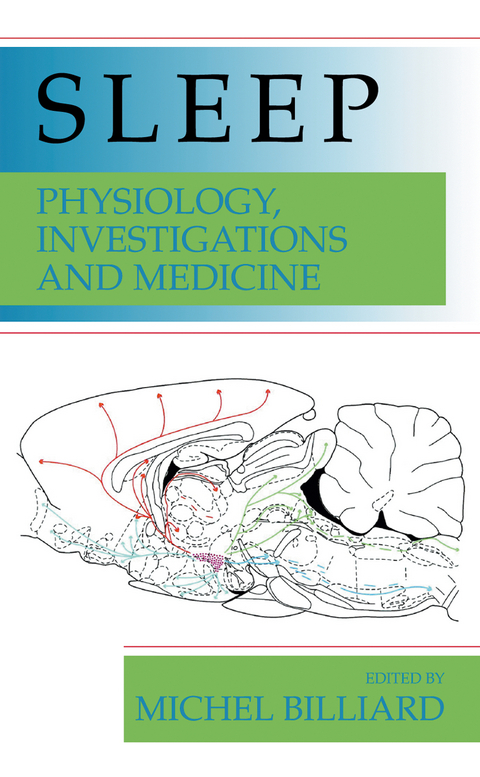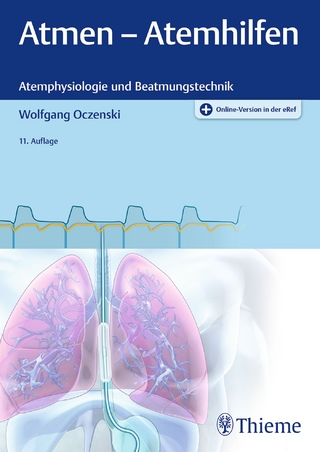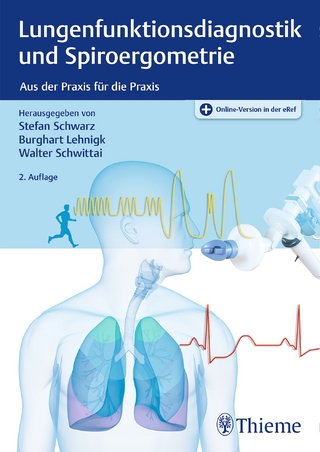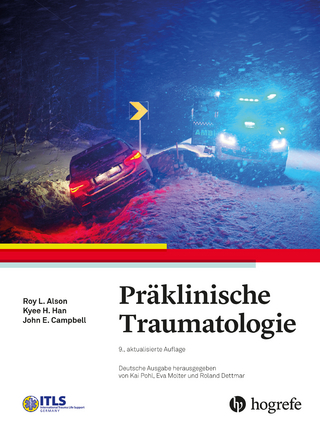
Sleep
Springer-Verlag New York Inc.
978-1-4613-4970-9 (ISBN)
1. Normal sleep.- 2. Normal sleep in children.- 3. Neurobiology of the sleep-wake cycle.- 4. The major physiological fonctions during sleep.- 5. Models of human sleep regulation.- 6. Melatonin and sleep-wake rhythm.- 7. Molecular genetics, circadian rhythms and sleep.- 8. Mental activities during sleep.- 9. Polysomnography.- 10. Ambulatory Systems.- 11. Guidelines for visual sleep analysis.- 12. Automatic sleep analysis.- 13. Investigation of vigilance and sleepiness.- 14. Insomnia: Introduction.- 15. A decision tree approach to the differential diagnosis of insomnia.- 16. Transient and short term insomnia.- 17. Primary insomnia.- 18. Insomnia associated with medical disorders.- 19. Insomnia associated with psychiatric disorders.- 20. Insomnia linked to medications.- 21. Benzodiazepines and new non-benzodiazepine agents.- 22. Other medications used for insomnia.- 23. Insomnia in children: Clinical aspects and treatment.- 24. Sleep and circadian rhythms in normal aging.- 25. Hypersomnias: Introduction.- 26. A decision tree approach to the differential diagnosis of hypersomnia.- 27. Insufficient sleep syndrome.- 28. Medication and alcohol dependent sleepiness.- 29. Obstructive sleep apnoea-hypopnea syndrome and upper airway resistance syndrome.- 30. Surgical and prosthetic treatment for sleep apnoea syndrome and upper airway resistance syndrome.- 31. Narcolepsy.- 32. Idiopathic hypersomnia.- 33. Recurrent hypersomnias.- 34. Other hypersomnias.- 35. Hypersomnia in children.- 36. Circadian rhythm sleep disorders: Introduction.- 37. A decision tree approach to the differential diagnosis of a circadian rhythm sleep disorders.- 38. Shift work sleep disorder.- 39. Time zone change (jet lag) syndrome.- 40. Circadian rhythm sleep disorders related to an abnormal escape of the sleep-wake cycle.- 41. Parasomnias.- 42. Enuresis.- 43. Snoring.- 44. Nocturnal hypoxemia in chronic obstructive pulmonary disease.- 45. Central alveolar hypoventilation syndrome.- 46. Sleep breathing abnormalities in neuromuscular diseases.- 47. Cardiocirculatory disorders and sleep.- 48. Restless legs syndrome in wakefulness and periodic leg movements in sleep.- 49. Abnormal postures and movements during sleep.- 50. Night epilepsies.- 51. Sleep-related headaches.- 52. Fatal familial insomnia.- 53. Sleep and the gastrointestinal tract.- 54. Sleep and sudden infant death syndrome.- 55. Sleep related painful erections.- 56. Mood disorders and sleep.- 57. Sleep and lesions in the central nervous system.- 58. Sleep as a tool for investigating epilepsies.- 59. Dysautonomias.- 60. Fibromyalgia and chronic fatigue syndrome: the role of sleep disturbances.- Questionnaires and scales.- 1. General questionnaire on sleep.- Morning Questionnaire.- 2. Questionnaires used in the evaluation of insomnia.- Sleep Impairment Index.- Beliefs And Attitudes About Sleep Scale.- The Pittsburgh Sleep Quality Index.- The Leeds Sleep Evaluation Questionnaire.- The Beck Depression Inventory.- 3. Scales used in the evaluation of hypersomnia.- The Stanford Sleepiness Scale.- The Karolinska Sleepiness Scale.- The Epworth Sleepiness Scale.- 4. Questionnaire used in the evaluation of circadian rhythm sleep disorder.- The Home and Östberg Questionnaire.
| Zusatzinfo | XX, 764 p. |
|---|---|
| Verlagsort | New York, NY |
| Sprache | englisch |
| Maße | 155 x 235 mm |
| Themenwelt | Medizin / Pharmazie ► Medizinische Fachgebiete ► HNO-Heilkunde |
| Medizinische Fachgebiete ► Innere Medizin ► Pneumologie | |
| Medizin / Pharmazie ► Medizinische Fachgebiete ► Neurologie | |
| Medizin / Pharmazie ► Medizinische Fachgebiete ► Pädiatrie | |
| Naturwissenschaften ► Biologie ► Humanbiologie | |
| Naturwissenschaften ► Biologie ► Zoologie | |
| ISBN-10 | 1-4613-4970-2 / 1461349702 |
| ISBN-13 | 978-1-4613-4970-9 / 9781461349709 |
| Zustand | Neuware |
| Haben Sie eine Frage zum Produkt? |
aus dem Bereich


